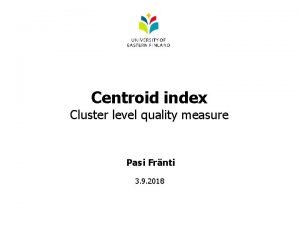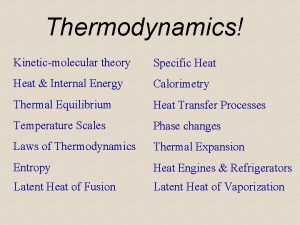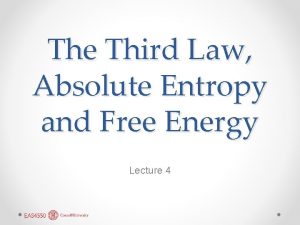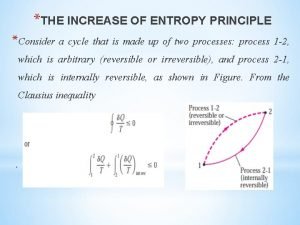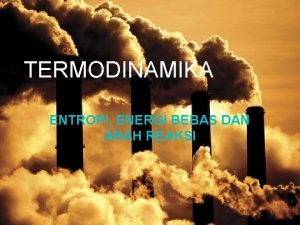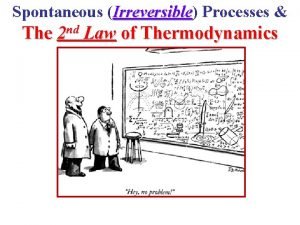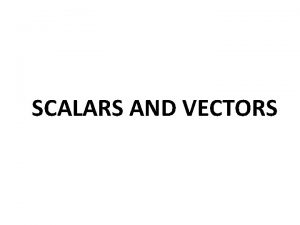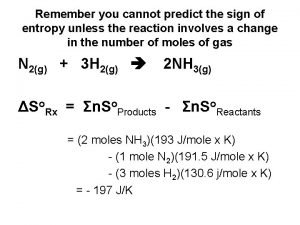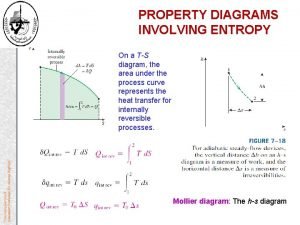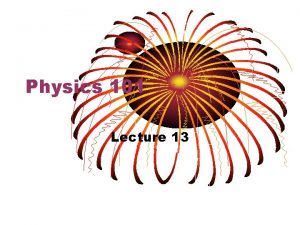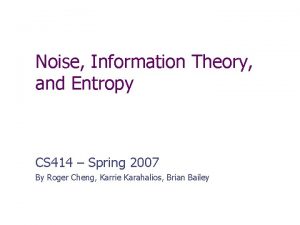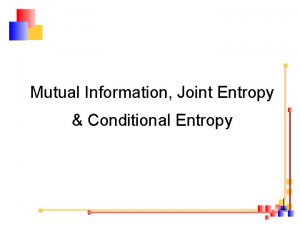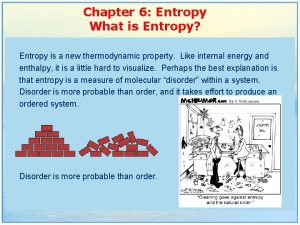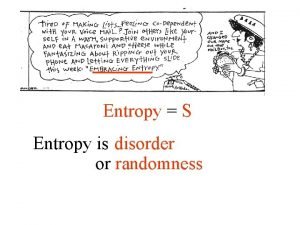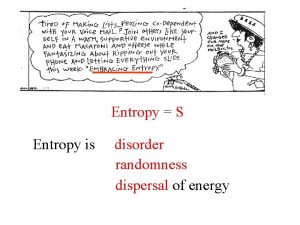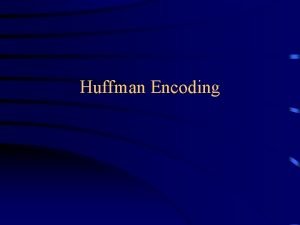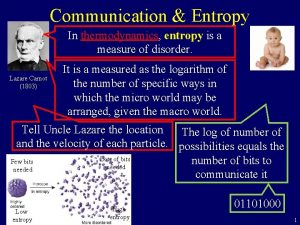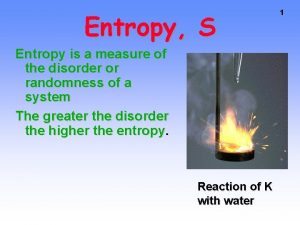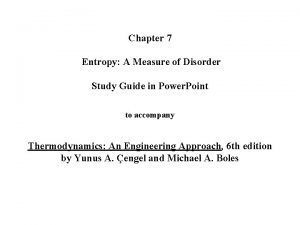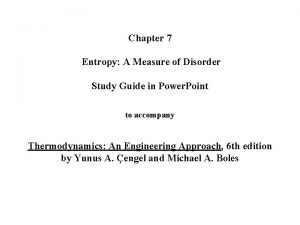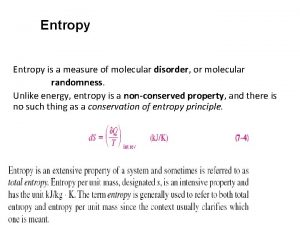ENTROPY Measure of Level of disorder in a














- Slides: 14

ENTROPY Measure of: Level of disorder in a system or Number of Microscopic Energy Levels Available to a Molecule (i. e. microstates)

SPONTANEOUS CHEMICAL PROCESSES Spontaneity = Tendency for process to occur naturally e. g. Iron tends to rust, diamond tends to turn to graphite, (fortunately, over a very long time period - relax, ladies & De. Beers!) dead plant material tends to decay, ice tends to melt at room temperature, brain cells tend to decay with time!

Spontaneity §Are all spontaneous changes exothermic?

Spontaneity §No, but most exothermic processes are spontaneous. §Some reactions may be spontaneous under one set of conditions, but non-spontaneous under other conditions. Øe. g. Formation of Lime from Chalk: Ca. CO 3 (s) Ca. O (s) + CO 2 (g) H = +178. 3 k. J Reaction becomes spontaneous > 800 0 C, even though it is endothermic!

Absolute Entropy (S) §With increasing temperature, the entropy of a molecule increases (more microscopic energy levels beome available, e. g. vibrations, rotations etc. ) §As the temperature of a molecule approaches absolute zero, microscopic energy levels also approach zero, so its entropy also approaches zero.

Absolute Entropy (S) S = k ln. W W = No. of microscopic energy levels In perfectly ordered solid, at 0 K, W = 1 S = k ln 1 = 0

this leads to:

the 3 rd Law of Thermodynamics

rd 3 Law of Thermodynamics §"the Entropy of a perfect crystalline substance approaches zero as the absolute temperature appraches zero"

Entropy Changes ( S) §Reaction Entropy ( Sr) § Sr = Sproducts - Sreactants

Standard Entropy of Reaction 0 ( S r) § ∆ S 0 r = (Entropy of products in standard states at temp. T) - (Entropy of reactants in standard states at temp. T) for : a. A + b. B c. C + d. D § ∆ S 0 r = c. S 0(C) + d. S 0 (D) - a. S 0 (A) - b. S 0(B)

Standard Entropy Change Calculation §Calculate S 0 r at 25 0 C for: N 2 H 4 (l) + 3 O 2 (g) 2 NO 2 (g) + 2 H 2 O(l) S 0 r = 2 x S 0(H 2 O(l))+ 2 S 0 (NO 2 (g))- S 0 ( N 2 H 4 (l)) - 3 S 0(O 2 (g)) = 2 mol (69. 91 JK-1 mol-1) + 2 mol (239. 95 JK-1 mol-1) 1 mol (121. 21 JK-1 mol-1) - 3 mol (205. 03 JK-1 mol-1) = -116. 58 JK-1

So what happened to the 2 nd Law of Thermodynamics?

nd 2 Law of Thermodynamics §In any spontaneous process, the Entropy of the Universe (i. e. system + surroundings) must increase: so § Ssys + Ssurr >0
 Factitious disorder
Factitious disorder Gibbons jacobean city comedy download
Gibbons jacobean city comedy download Measure air temperature and measure air pressure
Measure air temperature and measure air pressure Frnti
Frnti Entropy equation
Entropy equation Absolute entropy
Absolute entropy The increase of entropy principle
The increase of entropy principle Energi bebas gibbs
Energi bebas gibbs In a spontaneous irreversible process
In a spontaneous irreversible process Entropy change formula
Entropy change formula Entropy is scalar or vector
Entropy is scalar or vector Predict the sign of the entropy change
Predict the sign of the entropy change Thermodynamics
Thermodynamics Thermodynamic temperature
Thermodynamic temperature Yeytex
Yeytex



